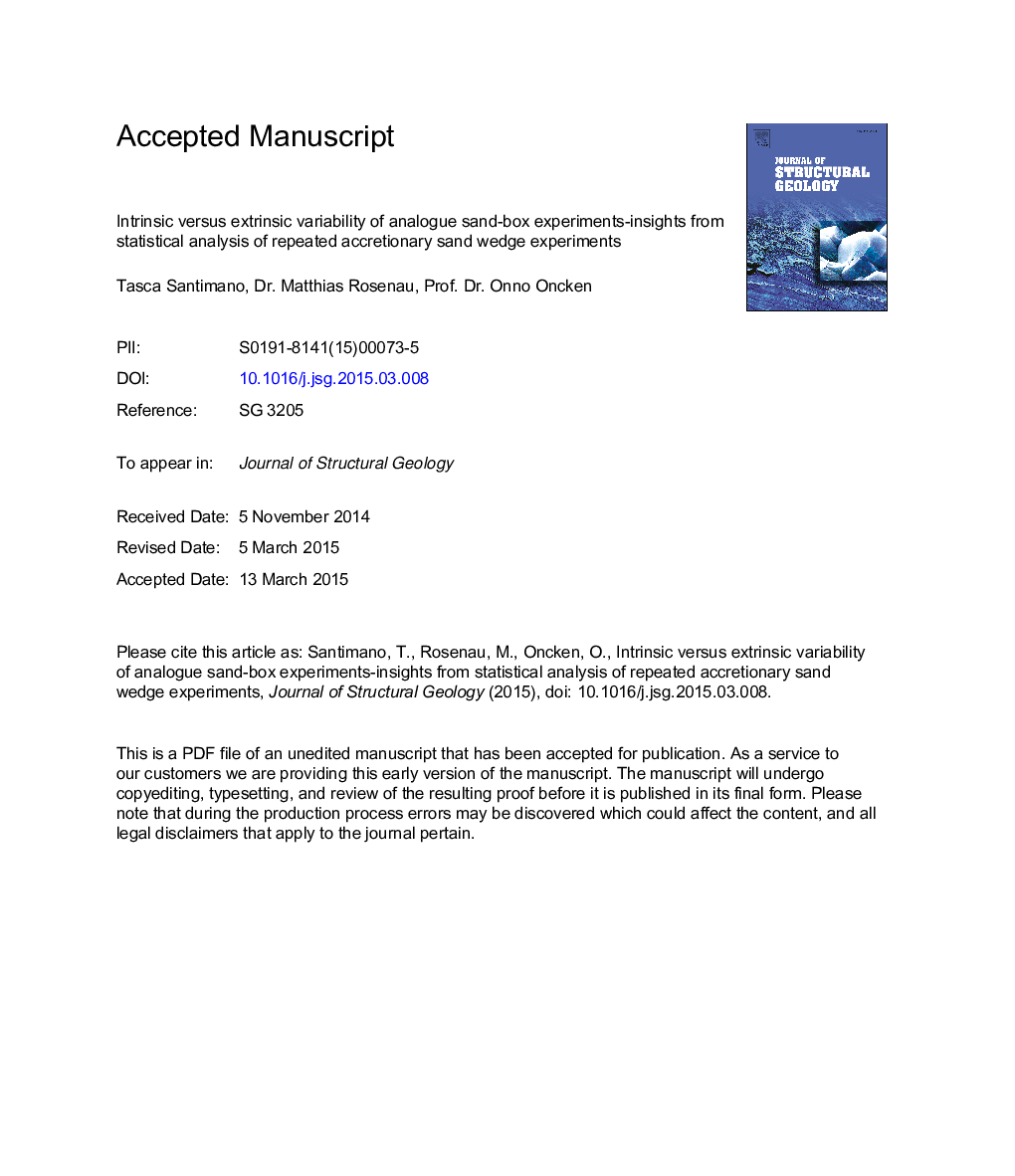| Article ID | Journal | Published Year | Pages | File Type |
|---|---|---|---|---|
| 6444798 | Journal of Structural Geology | 2015 | 58 Pages |
Abstract
For each variable we calculated the coefficient of variance (CV) and quantified the variability as a symmetric distribution (Normal, Laplacian) or asymmetric distribution (Gamma) using a Chi squared test (Ï2). Observables like fault dip/back thrust dip (CVÂ =Â 0.6-0.7/0.2-0.6) are less variable and decrease in magnitude with decreasing basal friction. Variables that are time dependent like fault lifetime (CVÂ =Â 0.19-0.56) and fault spacing (CV = 0.12 - 0.36) have a higher CV consequently affecting the variability of wedge slope (CVÂ =Â 0.12-0.33). These observables also increase in magnitude with increasing basal friction. As the mechanical complexity of the evolving wedge increases over time so does the CV and asymmetry of the distribution. In addition, we confirm the repeatability of experiments using an ANOVA test. Through the statistical analysis of results from repeated experiments we present a tool to quantify variability and an alternative method to gaining better insights into the dynamic mechanics of deformation in analogue sand wedges.
Related Topics
Physical Sciences and Engineering
Earth and Planetary Sciences
Geology
Authors
Tasca Santimano, Matthias Rosenau, Onno Oncken,
